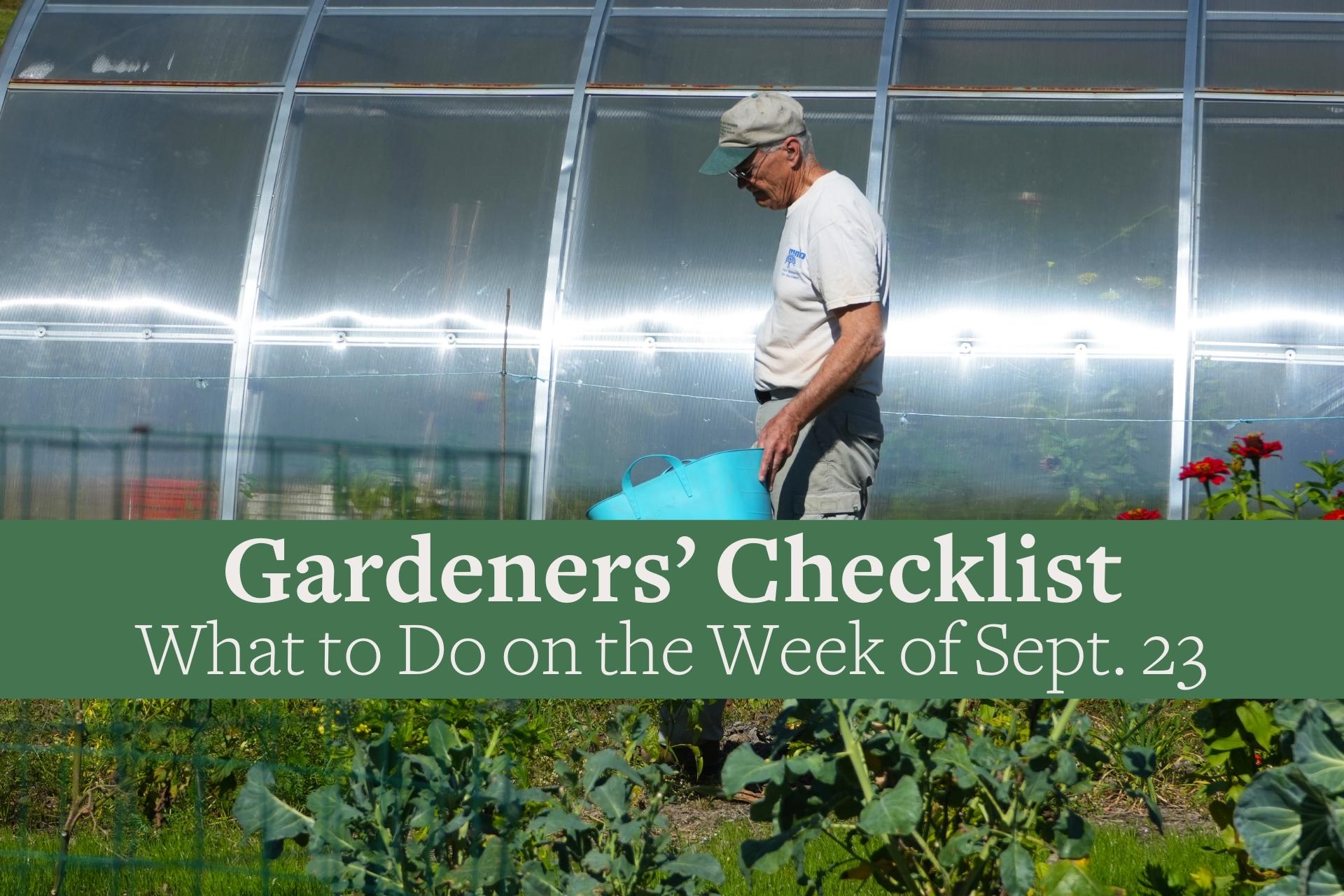You are here
Gardeners Checklist: Here Is What to Do on the Week of Sept. 23
Gardeners Checklist: Here Is What to Do on the Week of Sept. 23
By Ron Kujawski
* Leave root crops such as carrots, turnips, rutabagas, and parsnips in the ground until needed. They’ll keep better in the ground than in your house. When cold weather approaches, place a deep (one foot or more) layer of straw over the crops. You’ll be able to harvest these through much of the winter.
* Turn under spent bean plants rather than pull up the plants. In fact, this is a good strategy for most spent vegetable crops, that is, except for diseased plants. As the vegetation decomposes it releases nitrogen and other plant nutrients to the soil while enhancing the humus (decomposed organic matter) content of the soil. Some plants such as corn will need to be chopped into small pieces for faster decomposition.
* Harvest popcorn and Indian corn when the stalks and husks are completely dry. The kernels should be hard. After harvest, remove the husks and place the ears in a mesh bag for further drying in a warm, dry location.
* Harvest pears when they are full size but less than fully ripe. They’ll keep longer in storage and will have less of a gritty texture.
* Check houseplants at least once a week for insects and spider mites. Pest populations often increase dramatically when houseplants are moved indoors after their summer vacation outdoors.
* Batten down the hatches. Then caulk around windows, seal openings around doors, and repair holes in screens. Lady bugs, Western conifer seed bug, boxelder bug, crickets, clusterflies, and wasps are looking for a winter retreat, and your house is number one on their list.
*
Walk among your tomato plants at this time of year and you are bound to see fruit that have fallen to the ground. You might expect some of this fruit to drop as fully ripe tomatoes but many of the fallen tomatoes are still green. Without getting into the complex physiology of such fruit drop, suffice it to say that it typically occurs on plants that are stressed. You may notice that fruit drop is most common on plants with few healthy-looking leaves. Most of the leaves have either fallen or have turned brown due to disease such as early blight, or due to insect damage. On the other hand, those plants whose leaves are still green and healthy looking retain their fruit, even after developing their full red color. So, what do you do with the fallen green tomatoes? Gather them. Most of the fallen green tomatoes are ones that have reached physiological maturity but have not yet changed color. However, they will turn red in captivity, especially if placed in a paper bag with a ripe apple. If there are any deep dark green tomatoes, use these to make green tomato relish or to make fried green tomatoes.
Become a Master Gardener!
Applications are being accepted for the 2025 training program of the Western Massachusetts Master Gardener Association (WMMGA). The program covers sustainable horticultural practices through lectures and hands-on training in gardens throughout Western Massachusetts. After the training, Master Gardeners volunteer with over 30 non-profit garden projects and public informational activities. The deadline to apply is October 15, 2024. Detailed information is on the WMMGA website: wmmga.org.
Ron Kujawski began gardening at an early age on his family's onion farm in upstate New York. Although now retired, he spent most of his career teaching at the UMass Extension Service. He serves on Berkshire Botanical Garden’s Horticulture Advisory Committee. His book, Week-by-Week Vegetable Gardener’s Handbook, is available here.
Help Our Garden Grow!
Your donation helps us to educate and inspire visitors of all ages on the art and science of gardening and the preservation of our environment.
All Donations are 100 percent tax deductible.


